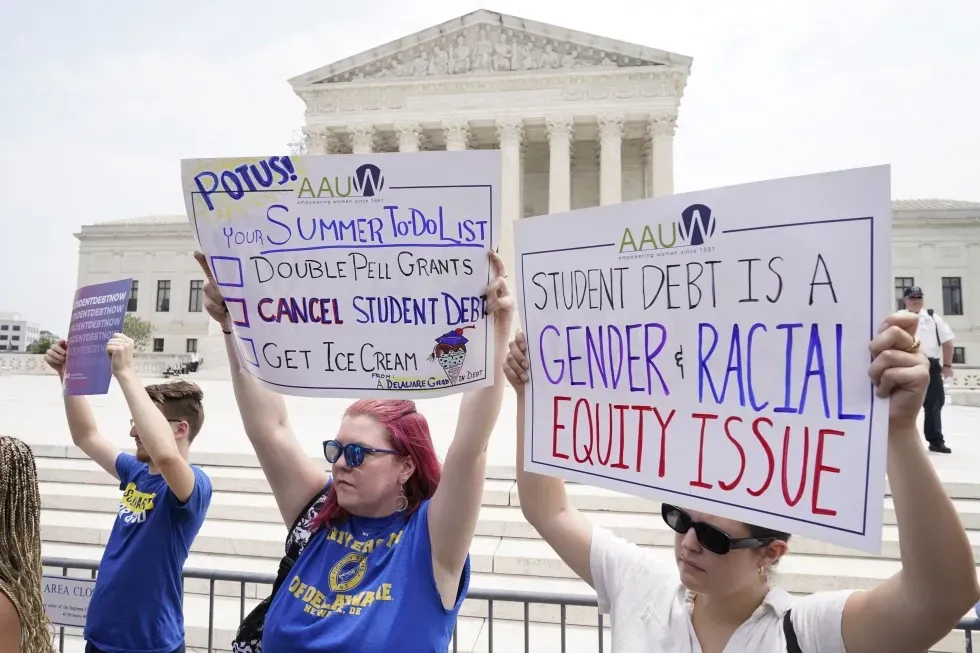3 Easy Ways to Continuously Improve Your Business
- By 6122ee467d22433199917c7d
- •
- 22 Jul, 2022
Continuous improvement might seem like something large corporations do but it is beneficial to small businesses and can be tailored to drive improvement in your company

They say all businesses are either growing or dying. There isn't an in-between. We are either improving or degrading at all times. This view is popular but a bit flawed. The truth is that we are always ebbing and flowing. Up isn't a straight line. Down isn't a perfect spiral of destruction. This makes it harder to know if you are improving. If today was great, but last week was terrible, are you growing or dying?
The answer for many successful businesses is to take on a mindset of continuous improvement. Regardless of where the business currently resides, there is always room for improvement. This gives us power, because it gives us direction. It allows us to keep pushing forward, forging our path and solidifying our role in the marketplace.
But continuous improvement is often misunderstood. I've met many entrepreneurs who equate continuous improvement with perfectionism. They assume that harping on every small mistake by their staff helps them get better. It allows them to remain discontent, where they can then drive their people harder. The problem is that the system is more complex than that. Often these same business owners complain of high turnover. People don't want to work for a jerk. The talented and valuable employees will have options and will choose a better culture. The ones who stay are often the ones without any better options.
Sure, you feel daily that you drove your people as hard as possible. But the full system shows that a team of burnt-out employees is not better than happy, productive, experienced workers all driving in the same direction. It seems that continuous improvement is at odds with this vision of advanced productivity. When viewed through the perfectionist lens, it might seem that way. But through the systems lens, we see a completely different path to take.
So, how do you incorporate continuous improvement in your business without blindly driving your people harder and harder? Here are three easy ways to do it:
1. Metrics and KPIs
When I took over the operations of a small business years ago, I worked to create this continuous improvement culture. We wanted to scale a business that had plateaued. This meant changing operational strategies, not just doing what the business had always done. But before change, I knew we wanted to make sure that change was an improvement, not a degradation. How do you know that the recent adjustment in process means more profit and better efficiency? How can you quantify the quality improvement from adding another quality assurance step?
The only way to know you are improving is to use metrics. You should have benchmark data. You need to know that it takes three minutes per unit, or that every 100 units results in an average of four quality errors. You need to know how many units get done in an hour. You must be able to account for variances such as seasonality, part shortages, employee vacations, etc.
This means that you should start measuring everything. Today, this is often much easier than it was in years past. You likely have a variety of tools you can use to spit out usable reports. You might not have to have log files to dig through or data to run pivot tables to identify trends. You may find a few useful reports to give you enough insight to measure the key aspects of the business.
Once you have the data and form the insights, you can create Key Performance Indicators. Key Performance Indicators, or KPIs, are common in business. They give you the key aspects of the business that you monitor. They can allow you to set goals. You can establish ranges of acceptable output. We used them in the past to keep us balanced. When a KPI got out-of-whack, we looked at the full system to see why. Often, we were pushing too hard in another area, causing this side effect.
This allowed us to continuously improve, because we had the data. We knew that a change meant we were performing better. We didn't rely on gut instinct. We didn't just change and hope.
2. Learn to see systems
Key Performance Indicators are helpful, but to be truly effective, you must be able to see the systems in your business. Most people are blind to them. They see the cacophony of activities, not the systematic flow.
But day in and day out, these activities form patterns. There are structures underlying them and driving them. This is how you start to see the systems. You start by seeing patterns within the chaos. You identify the processes and procedures that drive the activities and create the patterns. This helps avoid playing whack-a-mole with your business. Jumping from problem to problem back to problem, you aren't improving. That results in change for the sake of change. But when you see the full system, you can put in place solutions that solve the current issue but also address the root cause, so it doesn't happen again.
Systems thinking is key to stopping the recurring problem. You see things differently. You identify how it happened and see how it could happen again in the future. Your fix means more than a temporary band-aid on the problem. It means a change in the systems to create an environment where that problem cannot happen again.
3. Plan, do, study, act
Dr. Edwards Deming is famous for bringing continuous improvement to Japan after WWII and helping them rebuild their manufacturing industry. His tactics were so successful that Japan started to overtake other countries and became known as a pillar of quality and profit.
One of the methods he used was Plan, Do, Study, Act. Often referred to as the Deming Cycle, this process allows us to make changes without the worry of degradation. It starts by planning out a change in procedure. This potential step towards improvement then gets implemented. It isn't blindly implemented. It is often tested in a smaller environment first.
Here is an example: Let's say that you see the potential for an added step in your quality control process. It seems like it might help catch errors quickly. Instead of creating a whole new policy for the whole QC team to follow, create a subset. Create a smaller batch to try it on. Or have half of the QC employees try the new approach.
This limits the risk. If there is some unexpected result, you can quickly revert. You limit the risk of making the change. Many improvement strategies get halted, because leaders are afraid to take the risk. This manages that risk, allowing you to experiment more.
Then we study the results. Because we already established the metrics and gathered all the benchmark data, we can measure the results from the change with the typical results. Are they better? Are they worse? Did the output stay the same?
Then we act. If the change improved the areas we targeted, then make the change a part of the standard process that is used. If it didn't result in the outcome you hoped, go back to the old process. This shows that change doesn't mean you go backwards. It means you always go forward; you continuously improve.
This is the opposite of change for the sake of change. Leaders unfamiliar with these techniques find it difficult to continuously improve. They succumb to striving for perfection and driving their people harder and harder. If they never accept the current effort, they feel they are making the business better. A better way is to establish the metrics and define the KPIs, so that you know what you are working towards. You can see if you are making things better or worse for the business.
Then view the systems in your business and focus improvement efforts on the systems and processes, not the efforts. Make it about the steps the company takes and the tasks being completed on a regular basis. Instead of the one-offs becoming the focus, target those recurring actions being taken.
Finally, implement Plan, Do, Study, Act. Use this cycle to reduce the risk from change. Use it to get employees to volunteer their thoughts on how the systems could be improved. Then test those ideas out without worrying that they won't work and cause the business to go backwards. Plan, Do, Study, Act helps you evaluate those changes in a real-world scenario before you change your processes and procedures.
You don't have to be a Fortune 500 company with a formal continuous improvement methodology to get the benefits of continuous improvement. You can take the core elements and create your own process. These can be customized to your teams. They can be as small and agile as they need to be. Following these three steps can help you continue to improve the systems of the business to create more efficiency, more output and more profit.

Savannah Britt owes about $27,000 on loans she took out to attend college at Rutgers University, a debt she was hoping to see reduced by President Joe Biden’s student loan forgiveness efforts.
Her payments are currently on hold while courts untangle challenges to the loan forgiveness program. But as the weeks tick down on Biden’s time in office, she could soon face a monthly payment of up to $250.
“With this new administration , the dream is gone. It’s shot,” said Britt, 30, who runs her own communications agency. “I was hopeful before Tuesday. I was waiting out the process. Even my mom has a loan that she took out to support me. She owes about $18,000, and she was in the process of it being forgiven, but it’s at a standstill.”
President-elect Donald Trump
and his fellow Republicans have criticized Biden’s loan forgiveness efforts, and lawsuits by GOP-led states have held up plans for widespread debt cancellation. Trump has not said what he would do on loan forgiveness, leaving millions of borrowers facing uncertainty over their personal finances.
The economy
was an important issue in the election, helping to propel Trump to victory. But for borrowers, concerns about their finances extend beyond inflation to include their student debt, said Persis Yu, managing counsel for the Student Borrower Protection Center.
“That’s a big part of what is making life unaffordable for them is this burden of expenses that they can’t seem to get out from under,” Yu said.
Student loan cancellation was not a focus of the campaign for either Trump or Vice President Kamala Harris , who steered clear of the issue at her political events. The issue came up just once in the September presidential debate, when Trump hammered Harris and Biden for failing to deliver their promise of widespread forgiveness. Trump called it a “total catastrophe” that “taunted young people.”
Biden promised the student loan cancellation program during his run for the presidency. From its launch, Biden’s loan forgiveness faced relentless pushback from opponents who said it heaped advantage on elites and came at the expense of those who repaid their loans or did not attend college.
Biden’s first plan to cancel up to $20,000 for millions of people was blocked by the Supreme Court last year. A second, narrower plan has been halted by a federal judge after Republican-led states sued. A separate policy intended to lower loan payments for struggling borrowers has been paused by a judge, also after Republican-controlled states challenged it.
Overall, Biden’s efforts were relatively unpopular, even among those with student loans. Three in 10 U.S. adults said they approved of how Biden had handled student loan debt, according to a poll this spring from the University of Chicago Harris School of Public Policy and The Associated Press-NORC Center for Public Affairs Research . Four in 10 disapproved. The others were neutral or didn’t know enough to say.
Project 2025, the blueprint for a hard-right turn in American government that aligns with some Trump priorities , calls for getting the federal government out of the student loan business and doing away with repayment plans that pre-date the Biden administration.
Even without directly addressing student loans, Trump has made promises that would affect them. He has pledged to eliminate the U.S. Department of Education, which manages the $1.6 trillion federal student loan portfolio. It’s unclear which entity would take that responsibility if the department were eliminated, which would require approval from Congress.Yu noted the Biden administration managed to cancel student loans for about 5 million borrowers , even though the signature forgiveness effort has been blocked. The administration did it by leaning into loan cancellation programs already in effect. For example, an existing student loan forgiveness program for public service workers has granted relief to more than 1 million Americans, up from just 7,000 who were approved before it was updated by the Biden administration two years ago.
“A lot of the cancellation that we saw in the last couple of years was because the Biden administration was committed to making the programs that are actually enshrined in law work for people,” Yu said.
The challenge of repaying the $23,000 she has borrowed to study education policy at Columbia University weighs on 23-year-old Zaakirah Rahman, but she said she did not see an alternative to pursing an advanced degree.
“It feels like the threshold for things is getting higher and suddenly getting a bachelor’s degree isn’t enough,” she said. “It’s expensive. It’s super expensive. But it seems like you don’t really have a choice.”
Sabrina Calazans, 27, owes about $30,000 on federal student loans from her college days at Arcadia University in Pennsylvania. Her payments also have been on hold, but she could soon face a monthly payment of over $300.
“As a first-generation American, I live at home with my family, I contribute to our household finances, and that payment is a lot for me and so many others like me,” said Calazans, who is originally from Brazil.
In her role as managing director for Student Debt Crisis Center, Calazans said she has been telling people to stay up to date on developments by using the loan simulator on the Federal Student Aid website and reading updated information on forgiveness qualifications and repayment programs.
“There’s a lot of confusion about student loans,” Calazans said, and not just among young people. “We’re seeing a lot of parents take out more debt for their children to be able to go to school. We’re seeing older folks go back to school and having to take out loans as well.”
SOURCE: AP NEWS

U.S. stocks are rallying Tuesday as voters head to the polls on the last day of the presidential election and as more data piles up showing the economy remains solid.
The S&P 500 was up 1.2% in afternoon trading, rising closer to its record set last month . The Dow Jones Industrial Average was up 431 points, or 1%, as of 12:50 p.m. Eastern time, while the Nasdaq composite was 1.5% higher.
Treasury yields also rallied after a report showed growth for retailers, transportation companies and other businesses in the U.S. services industries accelerated last month. That was despite economists’ expectations for a slowdown, and the Institute for Supply Management said it was the strongest growth since July 2022.
The strong data offered more hope that the U.S. economy will remain solid
and avoid a long-feared recession
following the worst inflation in generations
.
Excitement about the artificial-intelligence boom also helped lift the stock market, as it has for much of the last year. Software company Palantir Technologies jumped 23% after delivering bigger profit and revenue than analysts expected for the latest quarter. It’s an industry known for thinking and talking big, and CEO Alexander Karp said, “We absolutely eviscerated this quarter, driven by unrelenting AI demand that won’t slow down.”
It helped offset a 6.3% drop for NXP Semiconductors. The Dutch company fell to one of the largest losses in the S&P 500 after warning that weakness it saw in the industrial and other markets during the latest quarter is spreading to Europe and the Americas.
The market’s main event, though, is the election, even if the result may not be known for days, weeks or months as officials count all the votes. Such uncertainty could upset markets, along with an upcoming meeting by the Federal Reserve on interest rates later this week. The widespread expectation is for it to cut its main interest rate for a second straight time, as it widens its focus to keeping the job market solid in addition to getting inflation under control.
Despite all the uncertainty heading into the final day of voting, many professional investors suggest keeping the focus on the long term and what corporate profits will do over the next few years and a decade. The broad U.S. stock market has historically tended to rise regardless of which party wins the White House, even if each party’s policies help and hurt different industries’ profits underneath the surface.
Since 1945, the S&P 500 has risen in 73% of the years where a Democrat was president and 70% of the years when a Republican was the nation’s chief executive, according to Sam Stovall, chief investment strategist at CFRA.
The U.S. stock market has tended to rise more in magnitude when Democrats have been president, in part because a loss under George W. Bush’s term hurt the Republican’s average. Bush took over as the dot-com bubble was deflating and exited office when the 2008 global financial crisis and Great Recession were devastating markets.
The S&P 500 ended up rising 69.6% from that Election Day in 2020 through Monday, following President Joe Biden’s win. It set its latest all-time high on Oct. 18, as the U.S. economy bounced back from the COVID-19 pandemic and managed to avoid a recession despite a jump in inflation.
In the prior four years, the S&P 500 rose 57.5% from Election Day 2016 through Election Day 2020, in part because of cuts to tax rates signed by Trump.
Investors have already made moves in anticipation of a win by either Trump or Vice President Kamala Harris. The value of the Mexican peso might fall if Trump’s tariffs on Mexico come to fruition, for example.
But Paul Christopher, head of global investment strategy at Wells Fargo Investment Institute, suggests not getting caught up in the pre-election moves, or even those immediately after the polls close, “which we believe will face inevitable tempering, if not outright reversals, either before or after Inauguration Day.”
In the bond market, the yield on the 10-year Treasury rose to 4.34% following Tuesday morning’s strong report on U.S services businesses from 4.29% late Monday.
In stock markets abroad, indexes were mixed in Europe and Asia. The moves were mostly modest outside of jumps of 2.3% in Shanghai and 2.1% in Hong Kong.

Some manufacturers and retailers are urging President Joe Biden to invoke a 1947 law as a way to suspend a strike by 45,000 dockworkers that has shut down 36 U.S. ports from Maine to Texas.
At issue is Section 206 of the Labor Management Relations Act of 1947, better known as the Taft-Hartley Act. The law authorizes a president to seek a court order for an 80-day cooling-off period for companies and unions to try to resolve their differences.
Biden has said, though, that he won’t intervene in the strike.
Taft-Hartley was meant to curb the power of unions
The law was introduced by two Republicans — Sen. Robert Taft of Ohio and Rep. Fred Hartley Jr. of New Jersey — in the aftermath of World War II. It followed a series of strikes in 1945 and 1946 by workers who demanded better pay and working conditions after the privations of wartime.
President Harry Truman opposed Taft-Hartley, but his veto was overridden by Congress.
In addition to authorizing a president to intervene in strikes, the law banned “closed shops,” which require employers to hire only union workers. The ban allowed workers to refuse to join a union.
Taft-Hartley also barred “secondary boycotts,’' thereby making it illegal for unions to pressure neutral companies to stop doing business with an employer that was targeted in a strike.
It also required union leaders to sign affidavits declaring that they did not support the Communist Party.
Presidents can target a strike that may “imperil the national health and safety”
The president can appoint a board of inquiry to review and write a report on the labor dispute — and then direct the attorney general to ask a federal court to suspend a strike by workers or a lockout by management.
If the court issues an injunction, an 80-day cooling-off period would begin. During this period, management and unions must ”make every effort to adjust and settle their differences.’'
Still, the law cannot actually force union members to accept a contract offer.
Presidents have invoked Taft-Hartley 37 times in labor disputes
According to the Congressional Research Service, about half the time that presidents have invoked Section 206 of Taft-Hartley, the parties worked out their differences. But nine times, according to the research service, the workers went ahead with a strike.
President George W. Bush invoked Taft-Hartley in 2002 after 29 West Coast ports locked out members of the International Longshore and Warehouse Union in a standoff. (The two sides ended up reaching a contract.)
Biden has said he won’t use Taft-Hartley to intervene
Despite lobbying by the National Association of Manufacturers and the National Retail Federation, the president has maintained that he has no plans to try to suspend the dockworkers’ strike against ports on the East and Gulf coasts.
On Wednesday, before leaving Joint Base Andrews for an air tour of North Carolina to see the devastation from Hurricane Helene, Biden said the port strike was hampering efforts to provide emergency items for the relief effort.
“This natural disaster is incredibly consequential,” the president said. “The last thing we need on top of that is a man-made disaster — what’s going on at the ports.”
Biden noted that the companies that control East and Gulf coast ports have made huge profits since the pandemic.
“It’s time for them to sit at the table and get this strike done,” he said.
Though many ports are publicly owned, private companies often run operations that load and unload cargo.
William Brucher, a labor relations expert at Rutgers University, notes that Taft-Hartley injunctions are “widely despised, if not universally despised, by labor unions in the United States.”
And Vice President Kamala Harris is relying on support from organized labor in her presidential campaign against Donald Trump.
If the longshoremen’s strike drags on long enough and causes shortages that antagonize American consumers, pressure could grow on Biden to change course and intervene. But experts like Brucher suggest that most voters have already made up their minds and that the election outcome is “really more about turnout” now.
Which means, Brucher said, that “Democrats really can’t afford to alienate organized labor.”

